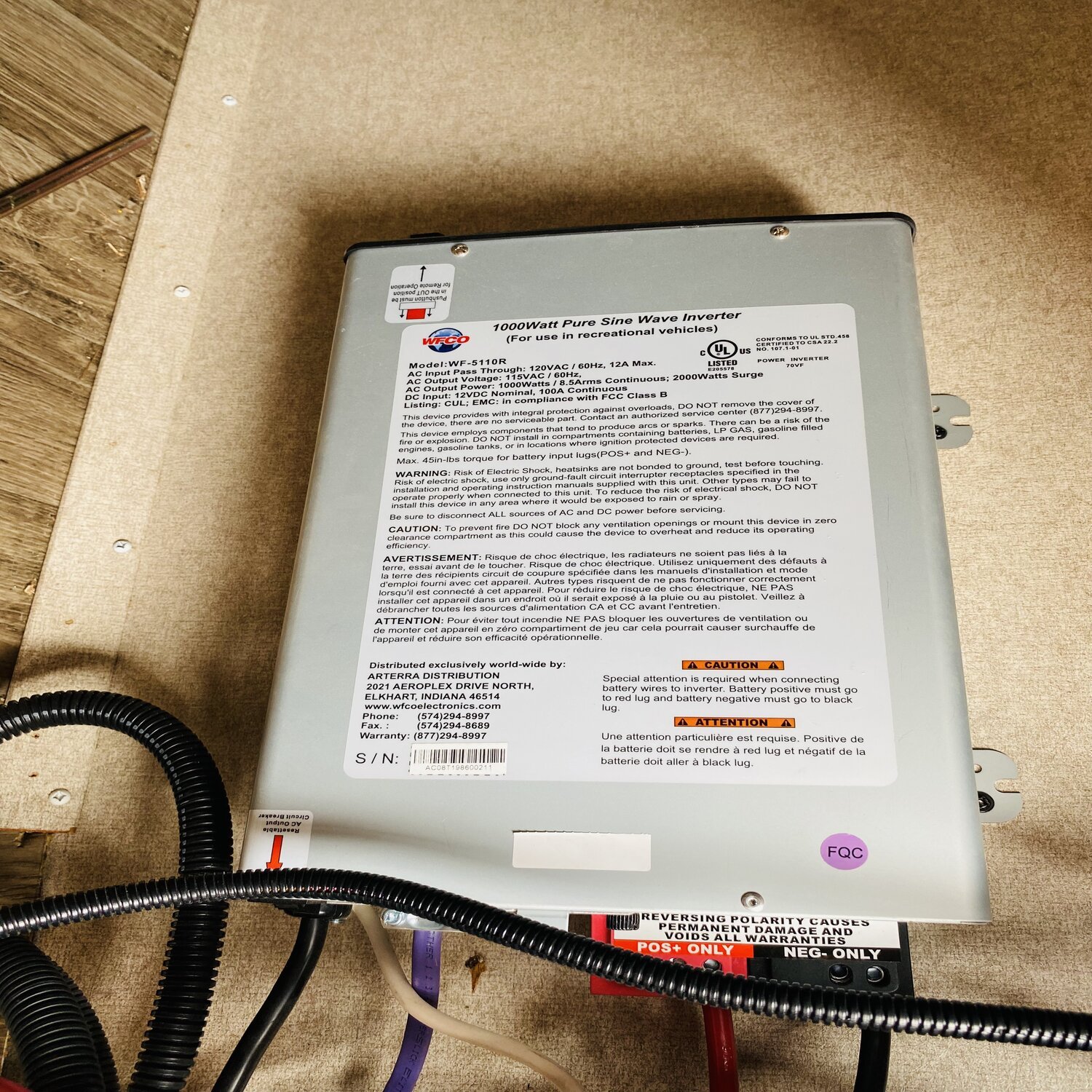Converters & Inverters
Power is what makes our RV experience happen. Without it there is no point in going out on the road! We would have grabbed a tent and some firewood if we wanted to go camping right? The value of these two wonderful machines in the life of an RVer are going to be explained here. We have all sorts of stuff to power: the TV, our lights, the coffee maker, our slide outs, the PlayStation for the kids, and all of these items need power. We will go over the difference between a converter and inverter, what they do, and which of these items use what.
Converters
The simplest way I’ve been taught about what a converter does is a converter converts 120-volt electricity into 12-volt electricity. The voltage coming out of the pedestal is 120 volts but that would be way too much for certain items in our rig so the converter steps down the voltage by 10x. Check out the page on electrical for more nerdy info about volts, watts, and the like. When we think of 12-volt and what it powers we can typically think about it powering small items and usually the main function is to be the “brains” for bigger appliances and systems. When you are looking at your refrigerator (if an absorption-style), the eyebrow panel sometimes has a light or a simple display and this is powered by 12-volt. At the same time the heating element is being supplied by 120-volt, it’s doing the major lifting producing all the heat. This 12-volt electricity will read the temperature in the fridge and tell the heating element, “Hey! It’s time to get to work, get to heating!”. For why refrigerators need to heat to cool down, look at our refrigerator page.
As some simple troubleshooting goes, if you are having issues with any of these systems it could be a couple things. If you have not hooked up to shore power yet, then you may have an issue with your coach batteries. There are ways of testing the health and life of the battery but that is for another day. If you are hooked up to shore power and these systems are not working, the problem may be with the converter. A simple way to check this is to take your voltmeter and see what your DC voltage reads at your battery terminals. The voltage coming out of the converter should be 13.6 volts, this is more than 12 because it needs to charge the batteries. If it was the same then the batteries would never get to a full charge. When you check the voltage and it is less than the 13.6 volts, you may have a bad converter.
Inverters
Let’s take a look at inverters for a minute. A simple explanation is that 12-volts go in the inverter and the inverter “invents” 120-volts. Now all of you techy people and engineers are yelling at me now, “You can’t invent electricity!” Look, I totally agree but for me, I like things to be explained simply for me and that’s about as simple as it gets. What is really happening is this awesome computer takes 12-volt electricity and steps it up to 120-volts by creating an AC power through changing the sine waves. It is way over my head but if you would like to learn more about it, here is a little video that does a good job explaining inverters and some common problems you may find. He is speaking about coaches but this will apply to any RV which has an inverter. If you want to know some more information about the devices in your rig or just chat about your favorite ice cream flavor, we are here for you. Get in touch with us today.




